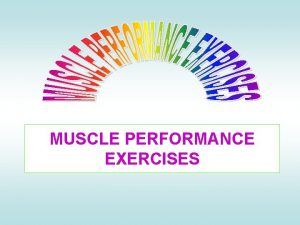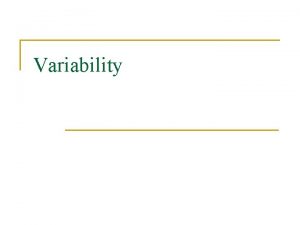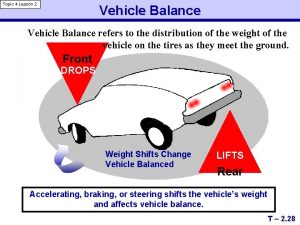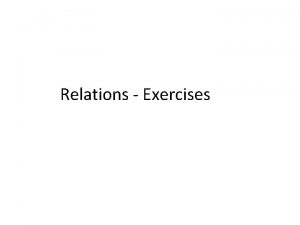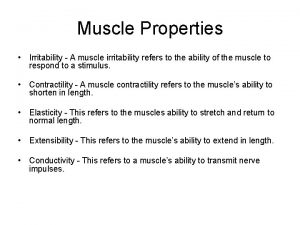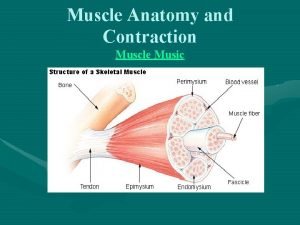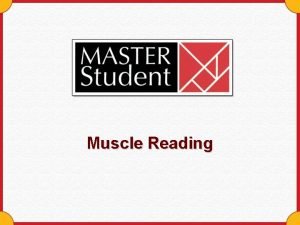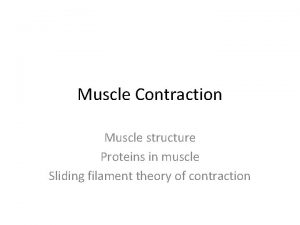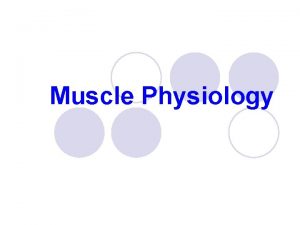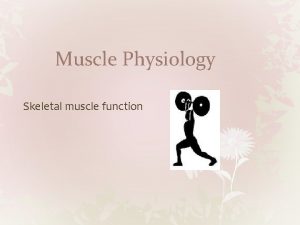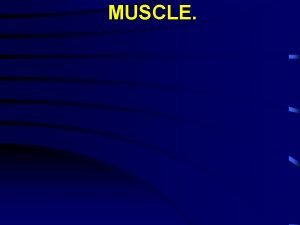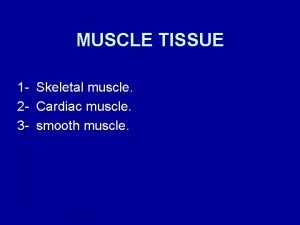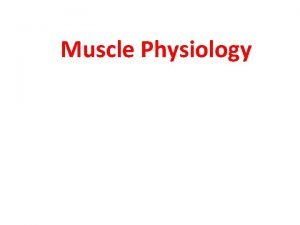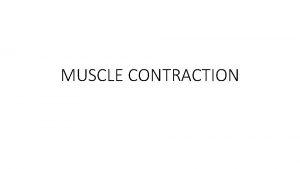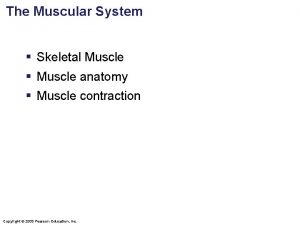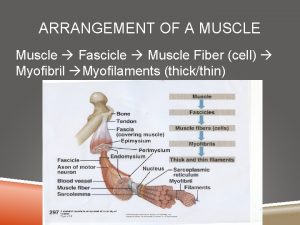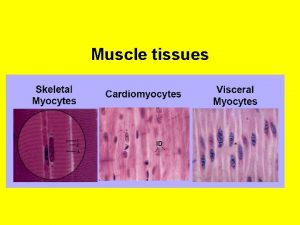MUSCLE PERFORMANCE EXERCISES Muscle Performance Muscle Performance refers


















- Slides: 18

MUSCLE PERFORMANCE EXERCISES

Muscle Performance • Muscle Performance refers to the capacity of the muscle to do work. The key elements of muscle performance are strength, power and endurance. • In order to improve muscle performance all these three aspects should be regarded.

Factors Affecting Muscle Performance • Muscle performance is affected by all systems of the body. – Morphological qualities of the muscle – Neurological, biochemical and biomechanical influences – Metabolic, cardiovascular, respiratory, emotional function

Causes of Impaired Muscle Performance • Disease, injury, or lesion affecting musculoskeletal or neuromuscular system. • Immobilization. • Disuse or inactivity.

Muscle Performance Exercises • Are a large category of exercises designed to improve three elements of muscle performance that is strength, power, and endurance

Muscle Strength: • is the ability to produce tension and the resultant force based on the demands placed upon the muscle. • Muscle strength is expressed as the greatest measurable force that can be exerted by a muscle or muscle group to overcome resistance during a single, maximal effort.

Muscle Power and Muscular endurance • Muscle Power: is the rate of performing work. It is the work (force X distance) produced by a muscle per unit of time (force X distance / time) • Muscular endurance: The ability of muscle to perform a greater number of contraction or hold against a load over an extended period of time.

• Types Of Muscular Contraction • Isometric (Static) Contraction: Involves muscular contractions with increasing muscle tension without movement of the joint. • Isotonic Dynamic Contraction: Involves muscular contractions with joint movement and excursion of a body segment. • Dynamic exercises involves either concentric (shortening) or eccentric ( lengthening) contraction. • • Concentric Contraction: is a shortening contraction when the muscle contract with increasing tension and a decrease the distance between the origin and insertion (shortening). • Eccentric Contraction: is a lengthening contraction when the muscle is loaded behind its force producing capacity causing physical lengthening of the muscle as it attempts to control the load. • This type of muscular contraction serves to check the rate of motion of an extremity, acting as a braking action.

Isometric Exercises • Definition • Isometric exercise also known as a form of static exercise. Isometric comes from the Greek "iso-", equal + "metron", measure = maintaining the same measure, dimension or length. • The muscle contract without visible change in Joint motion or muscle length. • There is no physical work done (force x distance) • There is great tension and force output produced by the muscle. • Tension is directly proportional to resistance. • Tension is the force output of the muscle.

• • Sources of resistance: Holding against a force applied manually. Holding weight in a particular position. Maintaining a position against the resistance of the body weight. • Pushing or pulling on immovable object.

• Isometric exercise is “exercise in which a muscle contracts and produces force without an appreciable change in length of the muscle and without visible joint motion. • Isotonic exercise: Exercise in which a contracting muscle shortens against a constant load, as when lifting a weight.

Types of Isometric Exercises – Muscle setting exercises. – Stabilization exercises – Multiple angle isometrics

Muscle Setting Exercise • Definition: is low intensity isometric exercise performed against little to no resistance. • As muscle setting is not performed against any appreciable resistance, it will not improve muscle strength except in very weak muscles

Importance • Muscle setting can retard muscle atrophy in the stage of rehabilitation of a muscle when immobilization is necessary. • It is used to promote muscle relaxation and circulation and to decrease muscle pain and spasm after injury to soft tissues during the acute stage of healing. • Muscle setting maintain mobility between muscle fibers as they heal.

Indications of Isometric Exercises • During immobilization as joint movement is not possible due to immobilization by casts, splints, braces, or various types of traction apparatus. • After joint surgeries or injuries, when movement is too painful, or when movement may interfere with the healing process. • When the muscle weakness is confined to a definite angle or part of the range.

Aims of Isometric exercises • Prevent or minimize muscle atrophy when joint movement is not possible • Activate muscle and facilitate muscle contraction specially after surgeries or when acute injury of the joint or the soft tissue surrounding it. • Develop posture or joint stability. • Improve muscle strength when use of dynamic resistance exercises could harm the condition. • To develop static muscle strength at particular points of the range consistent with specific task related needs.

Contraindications and precautions – Isometric exercise can increase blood pressure and heart rate to levels that would be dangerous for anyone with undiagnosed cardiac problems. – Isometric exercise also increases intra abdominal pressure to dangerously high levels. – Be wear to instruct the patient not to hold breathing during isometric exercise to avoid valsalva maneuver.

Points to remember • Muscular strength is only at the specific angle at which the exercise is performed. Hence, to make isometric exercise effective at increasing functional strength it must be repeated at many different joint angles. • Isometric exercise does not increase muscular endurance or functional capacity in real world situation as dynamic exercise • Isometric improvements have also been shown to be rate specific. Isometric exercise is best effective at slower movements • Isometric exercises on their own are not recommended for strength training. They are only part of a complete exercise program. • The great thing about isometric exercises is they can be performed just about anywhere and at any time.
 Multiple angle muscle setting
Multiple angle muscle setting Refers to a mode of fiction represented in a performance
Refers to a mode of fiction represented in a performance Characteristics of skeletal muscles
Characteristics of skeletal muscles Powerful shoulder abductor used to raise the arm overhead
Powerful shoulder abductor used to raise the arm overhead Performance levels
Performance levels Behaviorally anchored rating scale
Behaviorally anchored rating scale 2018 jcids manual
2018 jcids manual Diversity refers to:
Diversity refers to: Corporate culture refers to
Corporate culture refers to Operating cycle formula
Operating cycle formula Structure refers to
Structure refers to Text structure refers to
Text structure refers to Intranet wbs
Intranet wbs Variability refers to
Variability refers to Value added model education
Value added model education Balance vehicle
Balance vehicle Vehicle weight shifts forward and back is called
Vehicle weight shifts forward and back is called Definition of telegraphic speech in psychology
Definition of telegraphic speech in psychology Rhythm radiation fashion
Rhythm radiation fashion
